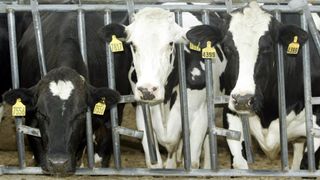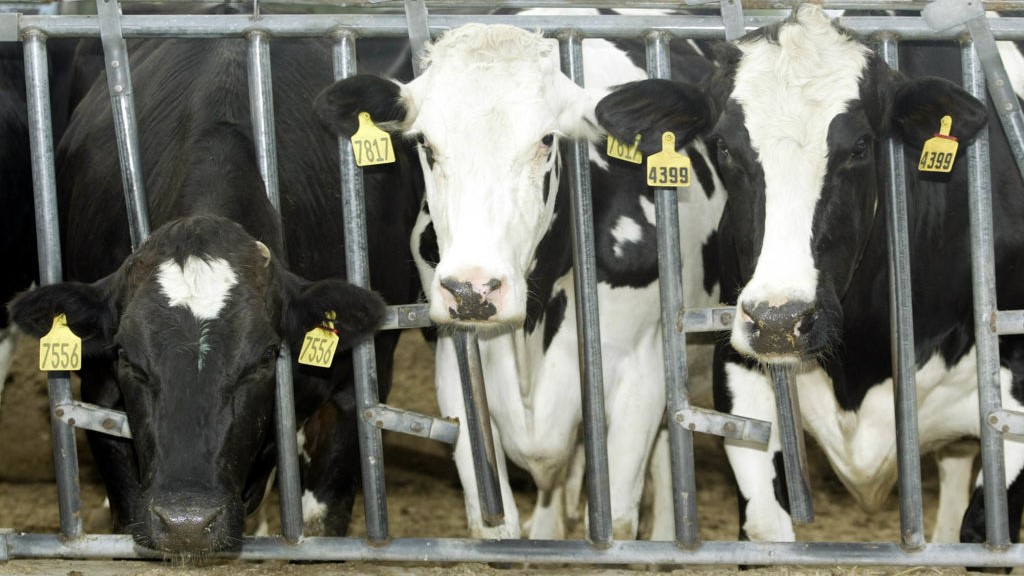
A second person in the U.S. has caught bird flu in the midst of an ongoing outbreak among animals on dairy farms.
(Image credit: Bloomberg / Contributor via Getty Images)
A second human case of bird flu has been linked to the ongoing outbreak in cows on U.S. dairy farms, the Centers for Disease Control and Prevention (CDC) reported Wednesday (May 22).
A subtype of avian influenza called H5N1 was initially discovered in U.S. cows in March and has since been detected among cattle in nine states. The commercial milk and meat supply is safe to consume, although raw milk samples from sick cows have been found to carry the virus, so unpasteurized milk might pose a risk of infection to humans.
However, no human infections with H5N1 have yet been tied to consuming raw milk; the two human cases flagged so far affected dairy workers employed by farms with H5N1-infected cows. The first possible case of cow-to-human transmission, reported in April in Texas, involved an individual whose only symptom was eye redness. The second case, just identified in Michigan, also involved only eye-related symptoms.
The person infected in Michigan tested negative for bird flu when a swab sample was taken from their nose, but an eye swab from the patient tested positive.
Related: 32 diseases you can catch from animals
“It’s not known exactly how eye infections result from avian influenza exposures,” the CDC report notes. They may arise from contamination of the eyes “with a splash of contaminated fluid,” such as milk, or else touching the eyes with a hand contaminated with the virus.
The CDC is now analyzing the genetic makeup of the virus that infected the Michigan patient and will release those data soon. In the meantime, the CDC still considers the risk of bird flu spread to the general public to be low.
Get the world’s most fascinating discoveries delivered straight to your inbox.
“Given the high levels of A(H5N1) virus in raw milk from infected cows, and the extent of the spread of this virus in dairy cows, similar additional human cases could be identified,” the CDC says. “Sporadic human infections with no ongoing spread will not change the CDC risk assessment for the U.S. general public, which CDC considers to be low.”
The agency has issued guidance for people working with H5N1-infected animals and those potentially exposed to the virus. For instance, people should avoid close, long or unprotected exposures to sick or dead animals, including wild birds, poultry and cows. They should also avoid unprotected exposure to the animals’ poop, bedding, unpasteurized milk and materials that have been in close contact with animals with suspected or confirmed H5N1 infections.
H5N1 is known to be deadly to poultry, but in humans, the symptoms triggered by the virus can vary widely, from being completely absent to being fatal. Only three cases of human H5N1 infection have ever been reported in the U.S. and all have been very mild. Available drugs for the seasonal flu can treat the infection in people.
Initial genetic testing of the virus on farms has not indicated that the virus has picked up any mutations that would make it more likely to spread easily between people. However, the CDC is closely monitoring the situation with that possibility in mind.
This article is for informational purposes only and is not meant to offer medical advice.
Ever wonder why some people build muscle more easily than others or why freckles come out in the sun? Send us your questions about how the human body works to community@livescience.com with the subject line “Health Desk Q,” and you may see your question answered on the website!
Nicoletta Lanese is the health channel editor at Live Science and was previously a news editor and staff writer at the site. She holds a graduate certificate in science communication from UC Santa Cruz and degrees in neuroscience and dance from the University of Florida. Her work has appeared in The Scientist, Science News, the Mercury News, Mongabay and Stanford Medicine Magazine, among other outlets. Based in NYC, she also remains heavily involved in dance and performs in local choreographers’ work.
>>> Read full article>>>
Copyright for syndicated content belongs to the linked Source : Live Science – https://www.livescience.com/health/flu/h5n1-bird-flu-has-spread-to-human-from-cow-in-2nd-probable-case-cdc-reports
